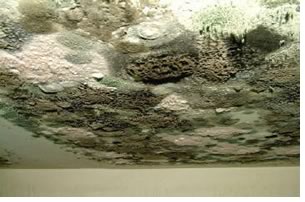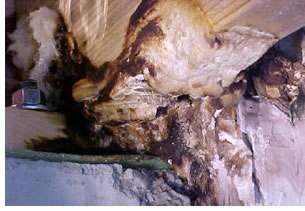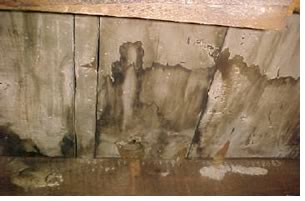

09/2005
What if the architect is the only one with insurance?
by Jamie Aycock, AIA
AIA Risk Management Committee
 The
construction industry is showing increasing concern about potential claims
for mold in buildings. What many design professionals may not realize
is that although professional liability policies for architects still
often provide coverage for mold claims, contractors’ general
liability policies frequently exclude such coverage. As a result, it
is possible that in a claim for mold-related damages caused by the contractor’s
activities on the job site, the architect and his or her insurance carrier
could become prime targets. Although this may not yet reflect a major
trend, architects should be as prepared as we can for this possibility.
The
construction industry is showing increasing concern about potential claims
for mold in buildings. What many design professionals may not realize
is that although professional liability policies for architects still
often provide coverage for mold claims, contractors’ general
liability policies frequently exclude such coverage. As a result, it
is possible that in a claim for mold-related damages caused by the contractor’s
activities on the job site, the architect and his or her insurance carrier
could become prime targets. Although this may not yet reflect a major
trend, architects should be as prepared as we can for this possibility.
According to an article in Construction Executive magazine (“What’s the Deal with Mold?” May 2003), insurers paid more than $1.2 billion for mold claims in 2002. We should probably guess that, given our litigious society and the huge swath of recent storm damage, the losses due to mold claims are going to get worse in the future. In the meantime, most would agree that the architect should not be held responsible for the contractor’s means, methods, and techniques of construction that may contribute to mold growth and potential damage claims.
 What’s an architect to do?
What’s an architect to do?
In most situations, architects are extremely unlikely to be in a position
to drop their own mold insurance coverage. It seems completely appropriate
in this circumstance for the architect to insist that the contractor
maintain coverage for his or her own jobsite activities that may cause
damages due to mold, and seek to limit the architect’s exposure
so as to be responsible only for mold-related damages arising out of
negligent design. That way, each party is responsible only for the
damages directly resulting from its own actions or inactions.
Although it is becoming more difficult, contractors may still be able to obtain coverage for mold claims depending on the project type and location. To require the contractor to obtain mold claim coverage, consider adding the following or similar language to the Supplementary General Conditions in the appropriate section:
Contractor’s Commercial General Liability insurance shall contain no exclusion that would deny coverage for any claim for either bodily injury or property damage arising out of or otherwise caused, in whole or in part, by any fungus, mildew, mold, or resulting allergens. If such exclusion exists and cannot be removed by endorsement, Contractor shall submit proof of coverage for mold claims under a Pollution Legal Liability or Contractor’s Pollution Liability policy.
 Look into project-specific insurance
Look into project-specific insurance
As the architect on a project, you should be sure to research the cost
of this insurance for that specific project. You will want to discuss
that with the owner, because it will probably result in a larger insurance
premium to the contractor and eventually be passed on to the owner.
Also consider adding this insurance requirement for those projects
where your professional judgment tells you it is needed. For instance,
new buildings in a hot, humid climate or those that you know will be
open to moisture penetration during the construction process may seem
particularly appropriate for this additional insurance coverage, while
a purely interior renovation project in a dry climate that is not conducive
to mold growth may suggest a different approach.
If the owner is not willing to pay the increase in premium to protect himself or herself and the architect, consider negotiating a hold-harmless clause in the Owner/Architect Agreement for the owner to indemnify and defend the architect, his or her employees, and consultants from mold claims that are due to the contractor’s means, methods, and techniques of construction. That will not only provide some extra protection to the architect, but might also make the increase in premium more attractive.
Jamie Aycock, AIA, is a member of the AIA Risk Management Committee, recent member of the national AIA Board of Directors, and principal with the firm Giattina Fisher Aycock Architects Inc., Birmingham, Ala.
Copyright 2005 The American Institute of Architects.
All rights reserved. Home Page ![]()
![]()
 |
||
McGraw-Hills’ construction.com
Web site contains a special section on mold updates.
Photos from www.moldacrossamerica.org. This article is intended for general information purposes only and does not constitute legal advice. The reader should consult with legal counsel to determine how laws, suggestions, and illustrations apply to specific situations.
|
||